3GeV FXT 2018 PicoDst Reproduction
I have reprocessed the MuDst->PicoDst conversion for ~50 files from runnumber 19154002 using SL20d and the following chain options: "y2018a,btofMatch,btofStartless,btofCalib::btofFXT,picoDst,PicoVtxMode:PicoVtxFXT,PicoCovMtxMode:PicoCovMtxWrite"
There is a minor difference with these chain options compared to those Rongrong sent out: there is an additional colon between btofCalib and btofFXT (it must be "btofCalib::btofFXT", without the double colon here, the new T0 algorithm is not implemented). Gene commented on this on MatterMost, but it was not implemented in an versions of the chain options sent out via email.
The intent of this reproduction was twofold: improved primary vertex selection and improved startless T0.
The primary vertex selection was changed so that a primary vertex in the PicoDsts for FXT data is within the range Vz=[198,202] cm (within the target given the experimental resolution to the vertex position). This had been tested independently and two plots are shown here. First, a plot of the Vz distribution for this same run from the original PicoDsts:
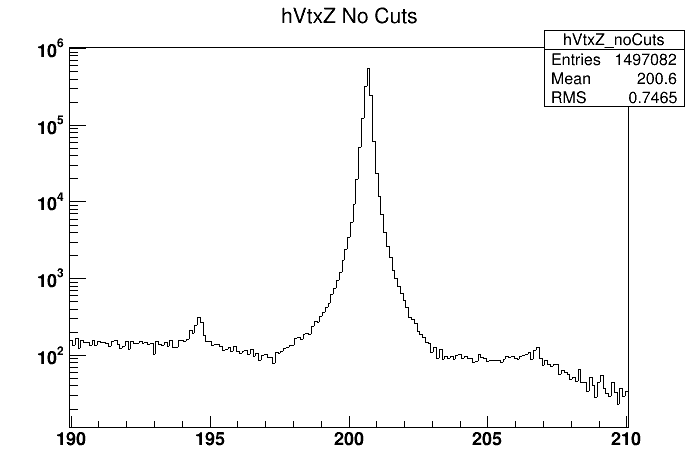
Next is a Vz distribution from the new PicoDsts I produced with the chain options above, including the changes to the vertex selection algorithm:
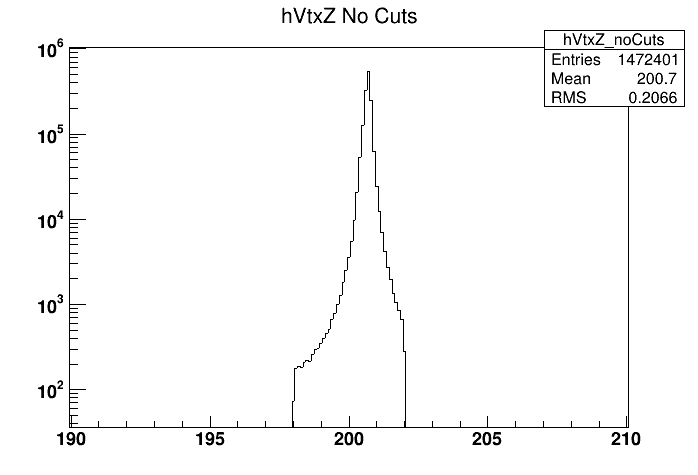
This demonstrates that the code is working exactly as expected.
The second purpose was to modify the startless T0 algorithm which originally used MIP pions from the bToF to calculate the T0. Xin has modified this algorithm to include kaons and protons as well so that the T0 is better defined for peripheral collisions.
Looking at nTofT0 for the original PicoDsts:
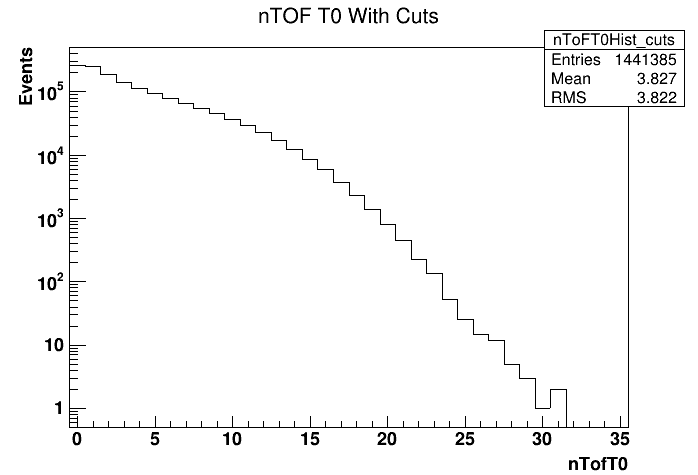
and comparing the distribution to that from the new PicoDsts:
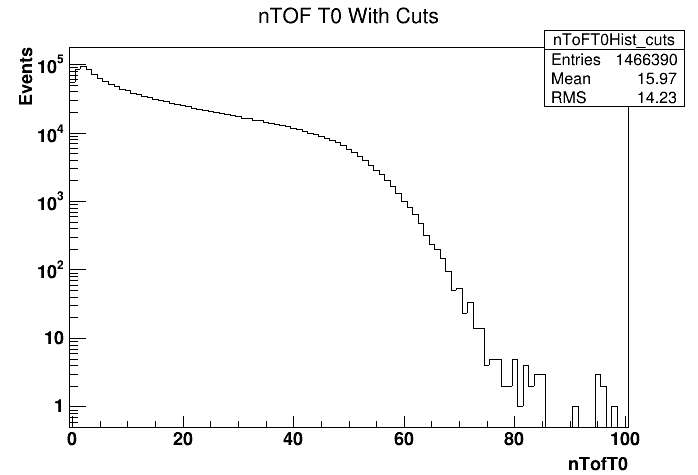
there appears to quite an obvious difference. The number of events has changed (my new production does not use all the files so they should not be the same) as has the mean. This dramatic change clearly
Looking at nTofT0 vs FXTMult for the original PicoDsts:
.png)
compared to the new PicoDsts:
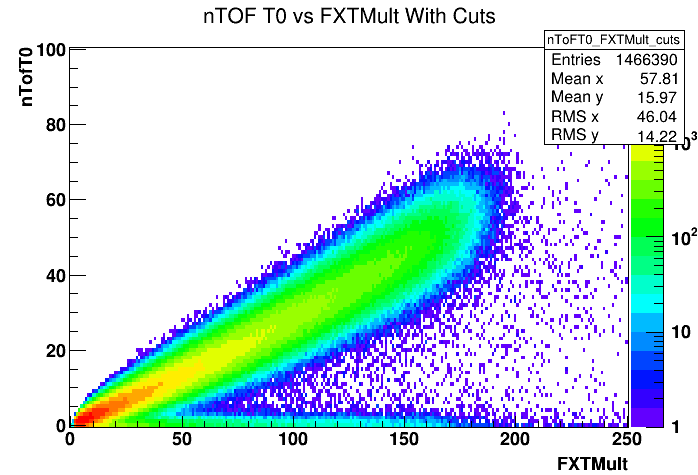
There is a significant improvement in the correlation between these variables.
Additionally, looking at the FXTMult distribution for various cuts on nTofT0 for the original PicoDsts:
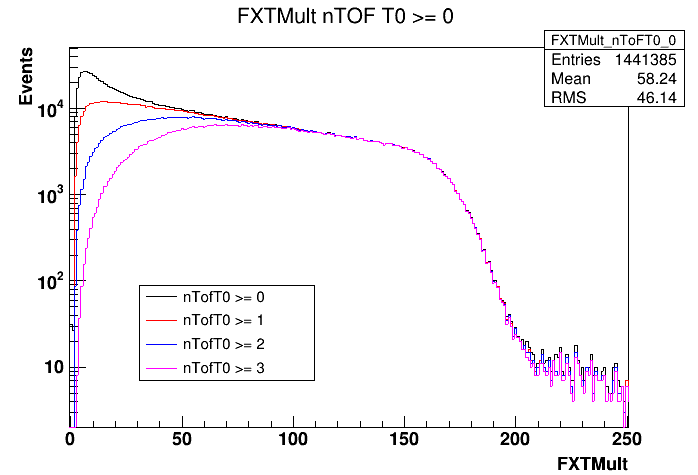
compared to the new PicoDsts:
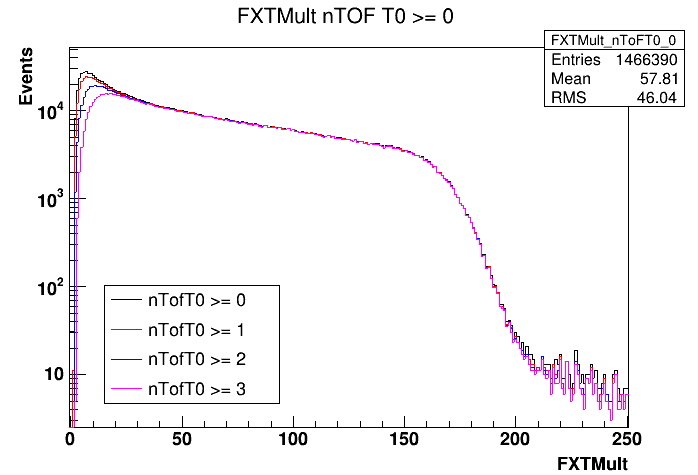
There again shows a significant improvement, similar to what Xin showed in this PDF: www.star.bnl.gov/protected/heavy/dongx/presentation/20200401_BTofT0.pdf
Based on my current findings, I conclude that the new vertex algorithm and T0 algorithm are both working properly and we are ready to go with the official MuDst->PicoDst conversion for the 2018 FXT data.
- bkimel's blog
- Login or register to post comments
